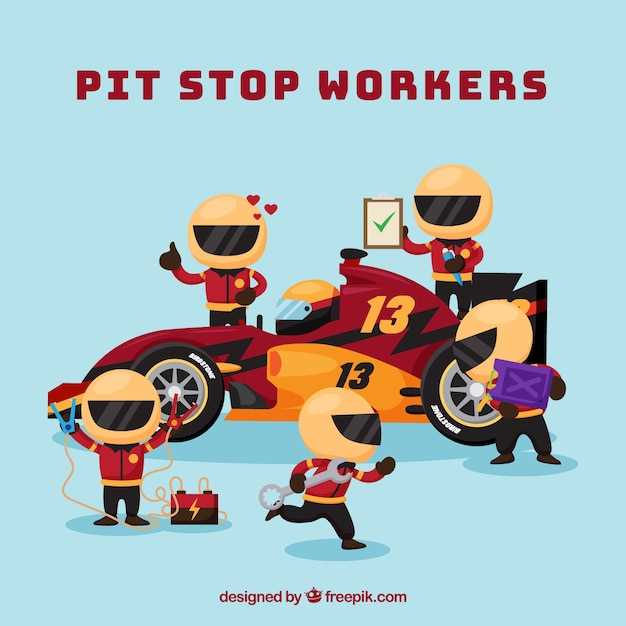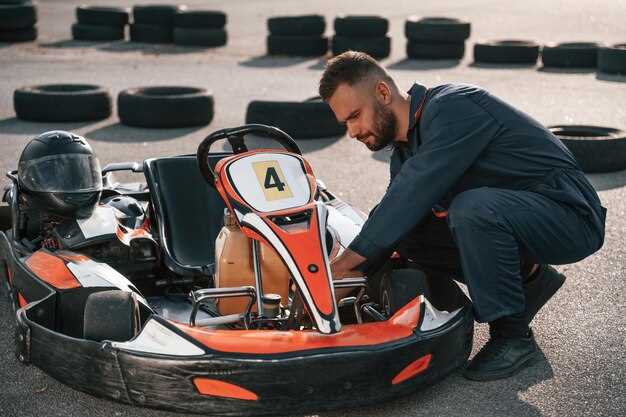
When entering the world of racing, understanding the foundational skills required to excel is essential for any aspiring driver. Racing is not just about speed; it involves a complex interplay of techniques that, once mastered, can significantly enhance performance on the track. This article will serve as a guide to key racing techniques that novices should focus on to become proficient drivers.
One of the fundamental skills every beginner should learn is cornering. This technique is crucial, as it determines the driver’s ability to maintain speed while navigating turns. Proper cornering techniques can make a substantial difference in racing times and overall control of the vehicle. As you progress, understanding how to effectively enter and exit corners will become a hallmark of your racing abilities.
Additionally, mastering the art of braking is vital for any new driver. Knowing when and how to brake can help maintain stability and control, allowing for smoother transitions through various sections of a race track. This key racing skill, combined with sharp cornering techniques, will lay the groundwork for a more competitive racing experience.
Understanding Racing Lines for Optimal Speed
Racing lines are crucial for drivers aiming to maximize their speed and efficiency on the track. A racing line refers to the optimal path a driver should take through a corner to minimize lap times. Mastering this technique requires a combination of skills, including understanding the physics of vehicle dynamics, anticipating track conditions, and developing a feel for the car’s handling characteristics.
To establish the best racing line, a driver must consider several factors. First, the apex of a corner is the point where the car is closest to the inside of the track. Hitting the apex smoothly enables the driver to maintain speed throughout the turn. Approaching corners at the right angle helps in managing the vehicle’s momentum, providing a balance between acceleration and steering input.
Another essential element is the exit of the corner. A well-executed racing line allows the driver to exit with maximum acceleration, which is vital for gaining speed onto the following straight. Choosing the correct point to accelerate is just as important as where to brake, as it affects the overall lap time significantly.
Drivers should also pay attention to different track surfaces. Variances such as bumps, elevation changes, and grip levels can alter the ideal racing line. Learning to adapt to these conditions helps enhance a driver’s skills and ensures they can maintain optimal speed in various scenarios.
By practicing and refining their technique, drivers can discover individual styles while adhering to fundamental racing line principles. Mastery of racing lines not only improves lap times but also contributes to overall driving confidence and success on the track.
Mastering Brake and Acceleration Zones on the Track

Mastering brake and acceleration zones is essential for beginners looking to improve their racing skills. Understanding when and how to brake effectively can significantly impact your overall performance on the track. Begin by identifying the specific brake zones for each corner. The goal is to apply the brakes in a smooth and controlled manner, allowing the vehicle to decelerate without losing stability.
Braking should ideally occur before entering a corner, allowing for a reduction in speed while maintaining control of the vehicle. One effective technique is the use of threshold braking, which involves applying maximum brake pressure just before the wheels start to lock up. This technique ensures you maintain optimum grip while slowing down efficiently.
As you exit the corner, transitioning from braking to acceleration is crucial. Once you have slowed sufficiently, it’s important to gradually release the brakes and begin applying the throttle. This technique, known as trail braking, can help maintain balance and stability during cornering. Proper timing and feel for the throttle are vital to avoid overwhelming the rear tires, leading to loss of control.
Practicing these techniques in a safe environment will enhance your ability to gauge the appropriate speed for each corner. Additionally, monitor your racing lines; a good line will minimize the need for excessive braking and allow for earlier acceleration. Each track will have its own characteristics, so adapting your techniques to align with these variations is key to improving your racing skills.
Developing proficiency in managing brake and acceleration zones creates opportunities for overtaking and gaining a competitive edge on the track. The mastery of these essential racing skills leads to faster lap times and greater confidence in your driving abilities.
Perfecting Cornering Techniques for Better Control

Cornering is a critical skill in racing that significantly impacts overall performance. Mastering this technique can lead to improved lap times and enhanced vehicle control. An effective approach starts with understanding the fundamentals of cornering dynamics.
The first aspect to consider is your entry speed. Reducing speed before entering a turn allows for better control and stability. Adopt the “slow in, fast out” philosophy. This means decelerating sufficiently before the corner and accelerating as you exit, maximizing your speed on the straightaway.
Your line through the corner is equally essential. Aim for the apex, which is the innermost point of the turn. A smooth and calculated trajectory can help maintain momentum. Utilize the entire width of the track to find the optimal path, increasing your cornering speed without compromising control.
Weight transfer is another crucial element. As you brake, weight shifts to the front tires, increasing their grip. During cornering, this weight then transfers to the outside tires. Understand how your car reacts to these shifts, and modulate your inputs accordingly to maintain stability.
Practicing throttle control while cornering is vital. Applying the throttle too aggressively can lead to loss of traction and understeer. Instead, apply power progressively as you unwind from the turn, allowing the rear tires to regain grip smoothly.
Furthermore, steering techniques play a significant role. Use smooth and gradual inputs rather than abrupt changes. Quick corrections can destabilize your vehicle, making it challenging to control. Focus on being precise with your steering wheel movements to maintain optimal traction.
Lastly, consistency is key. Regular practice of these cornering techniques will help develop the necessary racing skills. Recording your laps and analyzing them can reveal areas for improvement, enabling you to refine your cornering approach over time.



